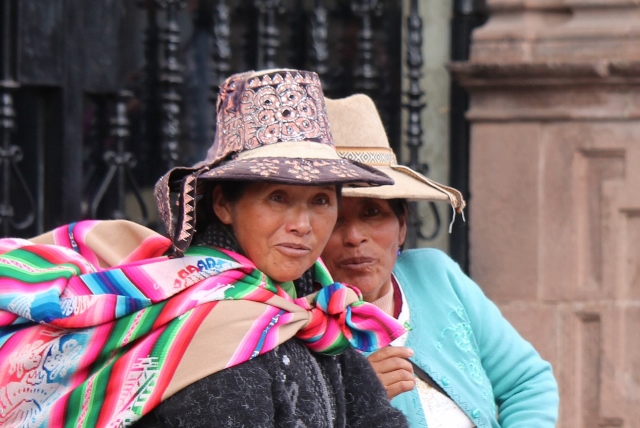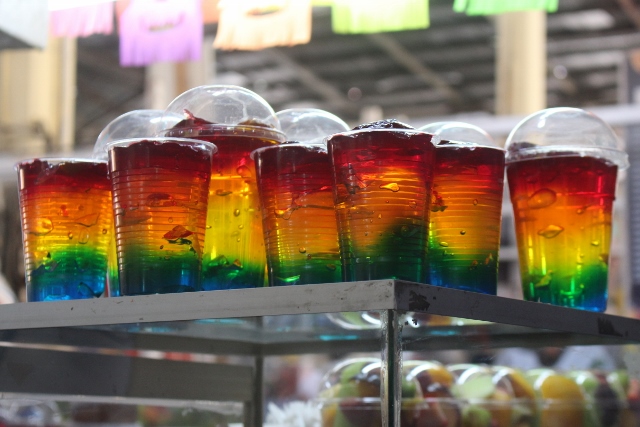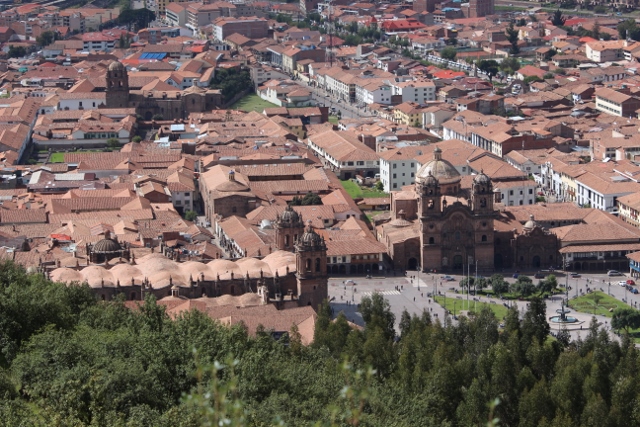Despite its sometimes overbearing tourist industry, Cusco is a charming town, with an authentic atmosphere and some great historical buildings, including the Inca fort Saqsaywaman.
Having been in mostly low-key towns in Peru, so far – even Nasca wasn’t much of a tourist trap, despite its famous ‘lines’ – Cusco comes as a shock. This is where each and every tourist to Peru gets to, in anticipation of a visit to the famed Inca temple complex of Machu Picchu and perhaps some of the several other Inca ruins – no, archaeological sites – in the surroundings. The taxi driver tries to overcharge us, the hotel is way overpriced. Endless touts offer their restaurants, or their massages, or their shops that sell unique baby-alpaca shawls at what they claim to be rock-bottom prices. Others offer hats, or sunglasses, or paintings, or keyrings, or any other tourist bric-a-brac, ‘nowhere cheaper than from me’; all those things you don’t really want, or need. But this is what it is, this is tourist country.
But Cusco is also a wonderful city. Lots of narrow cobbled streets, lined with adobe houses, wooden balconies, courtyards. The biggest Plaza we have encountered so far, with old colonial-era buildings with long arcades and balconies surrounding it. This is where Hernando Pizarro, half-brother of Francisco, was holed up with his fellow conquistadores during the siege of Manco Inca that was almost successful. A number of beautiful churches – the large, cold but impressive cathedral and the sumptuous, baroque Iglesia de la Compania de Jesus – have been constructed afterwards, the oldest dating from 1538, and rebuilt after devastating earthquakes in 1650 and 1950. No pictures allowed inside the church, unfortunately, because they are afraid of unscrupulous collectors ordering their pieces from photos. A Dominican convent has been built on the foundations of an Inca temple, with parts of the ancient Inca walls – perfectly fitted stone masonry without mortar -, preserved. Elsewhere, too, Inca walls are casually lining the streets, part of the city’s heritage, but also of the city’s character. The overall atmosphere is, despite the high tourist content, quite nice, especially once you get a little away from the old centre. A huge market, which combines lots of souvenir stalls with a fruit and vegetable section and a serious cheese department, as well as two whole isles of fruit juice bars and a large area of restaurant stalls. Outside women in traditional dress sell their small quantities of vegetables yet seem more interested in their social interactions with fellow sales women than anything else. Much of what they have for sale I have never seen before, colourful fruits, strangely shaped pulses. A huge variety of potatoes.
Above the city rises the Saqsayhuaman fort, or what remains of it. Many of the stones have been used for the construction of the early colonial buildings in Cusco, and the three prominent towers have gone, but the defensive works, three zig-zag walls around the fort and several narrow entrances, are still clearly visible. This is from where Manco Inca besieged the city, from where he almost managed to defeat the Spanish conquistadores. Another part of the complex had, apparently, a more religious function, and supports a throne and what looks like an amphitheatre. Overall, a great place to wander around for a couple of hours, to get a feel for this part of history. As is Cusco itself, really. Despite the dense tourist industry.
next: into the Sacred Valley, to Pisac
















































Toeristische stad maar wel de moeite waard zo te zien!!